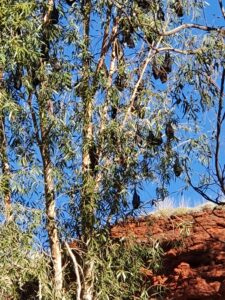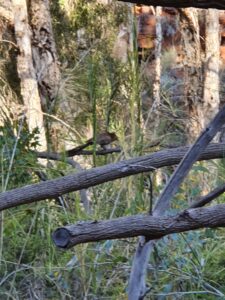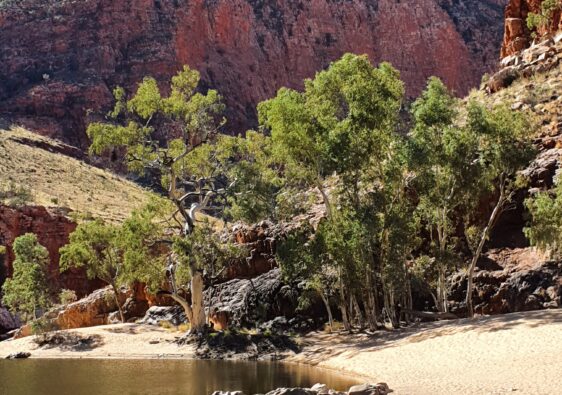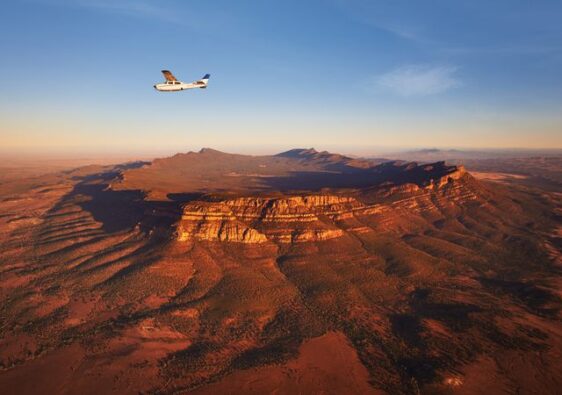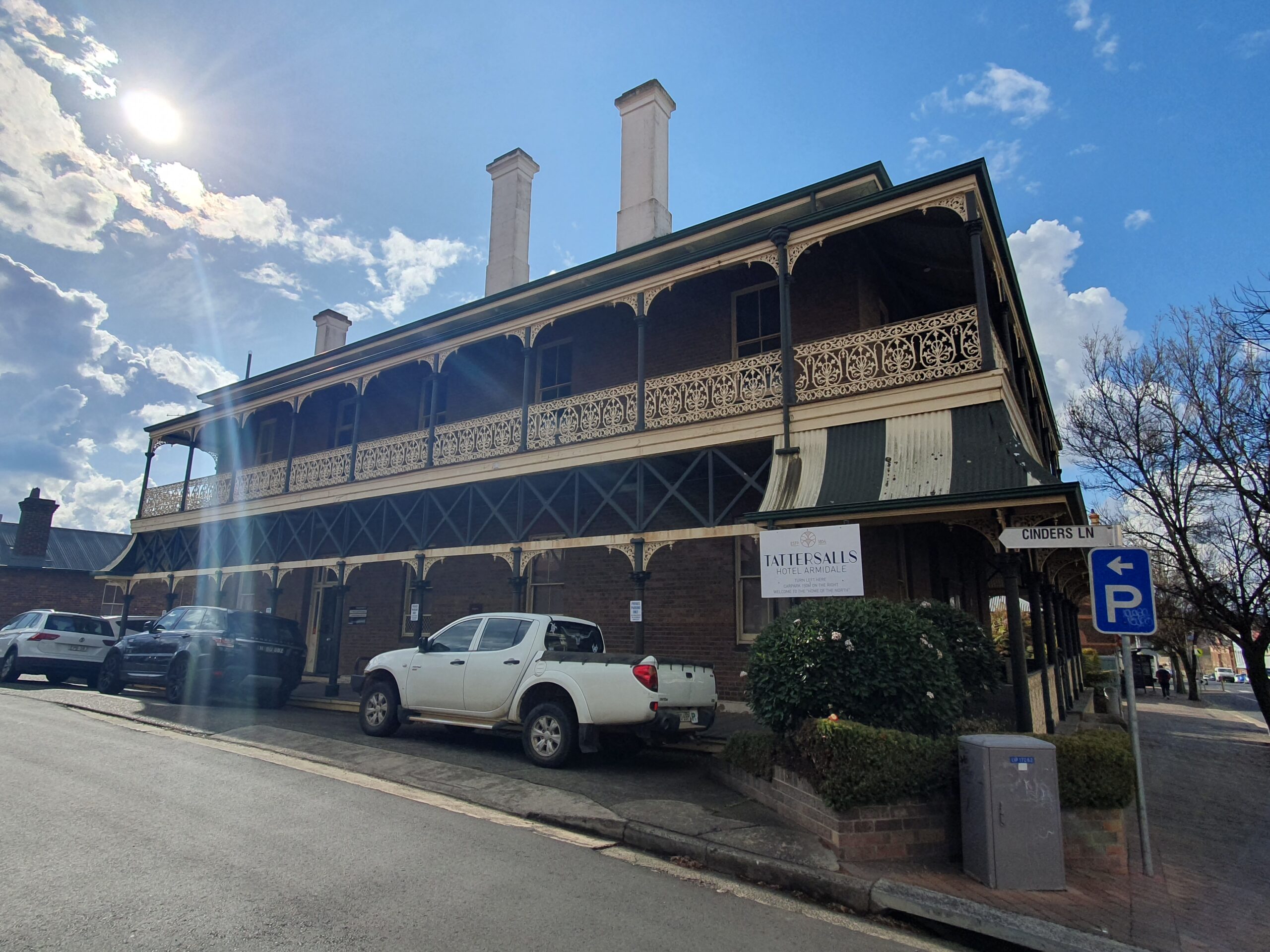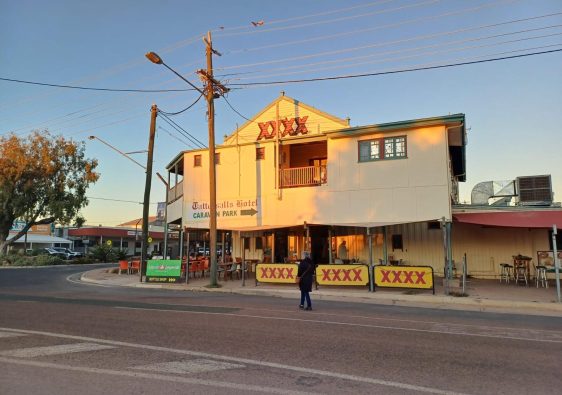June 17th- 21st
Day 57-61
Leaving Cleaverville for Port Hedland. It is an 11 klm dirt road from the main highway into Cleaverville Creek, which is a popular fishing spot with a natural boat ramp.
Passed through Roebourne, which has a painful history for Aboriginal prisoners who built the gaol and were housed there for 100 years. It was not uncommon for them to be marched down in leg and neck chains from hundreds of kilometers away.
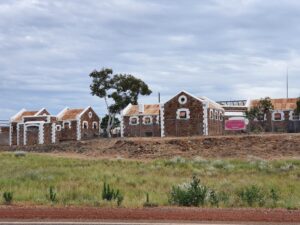 Roebourne Gaol
Roebourne Gaol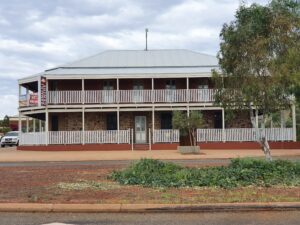 & Hotel
& Hotel
Port Hedland is a dynamic town in Western Australia’s beautiful North West located approximately 1,800km north of Perth. The pop. is around 16,000 people from diverse cultural backgrounds.

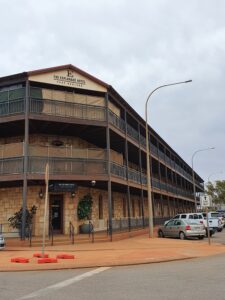
Our original inhabitants, the Kariyarra people, call the place Marapikurrinya for the hand shaped formation of the tidal creeks coming off the natural harbour.
It is Australia’s largest bulk export port with Pilbara Ports Authority recording a record annual tonnage throughput of over 600 million tonnes. Iron ore is the main export commodity, but also Salt, Manganese and Natural Gas. Previously they relied on cattle and sheep farming.
Big Trucks, Big Trains and Big Ships.
There are four main iron ore mines in the Pilbara, Hammersley, Newman, Tom Price and Paraburdoo, all are linked by road and rail, which is approx 400 klm inland from the port. The typical vessel is over 300 mtrs long with a carrying capacity of over 300,000 tonnes. It’s normal to have over 70 vessels waiting outside the port whilst 15 vessels are being loaded 24/7
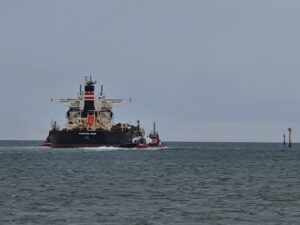 Another 300,000 tonnes of iron ore leaving
Another 300,000 tonnes of iron ore leaving
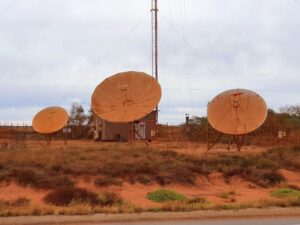 Red dust is everywhere, streets, roofs, cars, sidewalks, even on these (once) white dishes
Red dust is everywhere, streets, roofs, cars, sidewalks, even on these (once) white dishes
Trains can be over 3klm long with multiple engines fully loaded or 5klm empty. Trucks are huge and operate on the roads day & night. Petrol tankers, mining trucks and logistics trucks all have four trailers attached, at 140 tonnes that is some payload
June 18th Two Camels Creek Stop over
I lovely over night stop with fire on the way to Karajini.
June 19th-21st Karajini National Park
Covering over 600,000 hectares just north of the Tropic of Capricorn in the Hamersley Range, Karajini National Park is Western Australia’s second largest national park.
Climate can best be described as tropical semi-desert. Winter days a generally warm and clear, but being 750mtrs (2500 ft) above sea level, the temp is about 7 deg cooler than on the coast, so the nights can be cold in winter.
Mountains and escarpments rise out of the flat valleys, rising to 1250 mtrs (4000 ft). The high plateau is dissected by breathtaking gorges, and stony, tree-lined watercourses wind their way over the dusty plain. There are many beautiful gorges and sites to visit in Karajini National Park
Pull over to the side to let this rig pass.
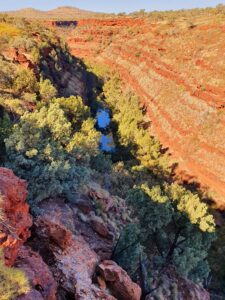
A work friend told me about Karajini and I have wanted to visit once we had a van. Thanks Joel. This park is popular for hikers, from all over the world. The Germans are some of the most popular tourists who return multiple times, take note Stephan, Verena & Juna, Anna & Dominik for your next visit. Young back-packers also flock here. With Covid, nearly everyone is local.
Declan & Trish have a friend who is volunteering as Camp Host for the month of June, Chrissie was able to secure us camp site thanks to her connections with the Ranger. This park has been booked out for months. We are grateful Chrissie.
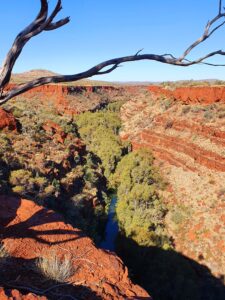
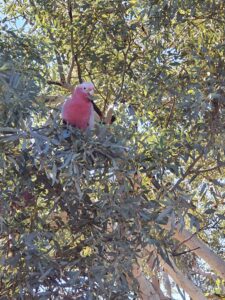
Follow the track down into Dales Gorge. Breathtaking is the only way to describe Karajini. A local Cockatoo, commonly known as a Galah. The Wickham’s Grevillea can reach 6 mtrs. It has grey-green leaves which have a holly-like shape, wild flowers are staring to bloom and also the Hammersley Wattle.
I love the contrast of the blue sky, red dirt and white gum trunk, a favourite of mine. The rare Sarah Wattle growing close to the purple or pink rock called McRae Shale.
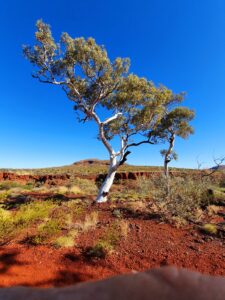
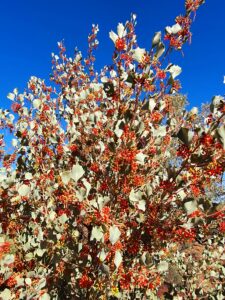
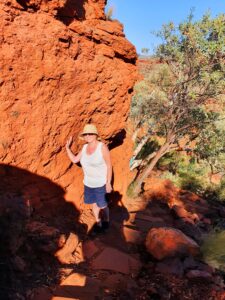
Over 2500 million years ago, when fine, iron-rich sediments accumulated on an ancient seafloor. Over a period of millions of years, further sediments were overlaid, creating immense pressure on the sediment layers and transforming them into tough layers of rock. Horizontal compression caused the rock to buckle and crack before rising up out of the water to form dry land. A drop in sea level caused creeks and rivers to cut down through the rocks, creating the deep gorges that we see today.
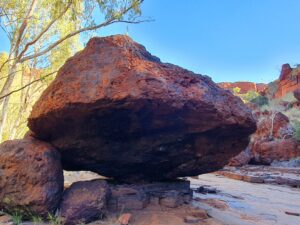
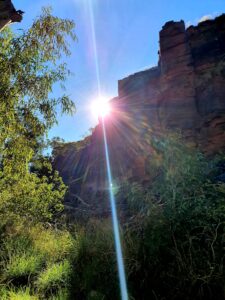
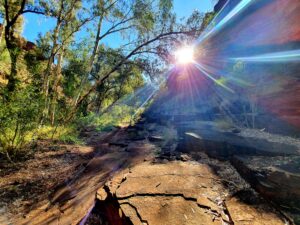
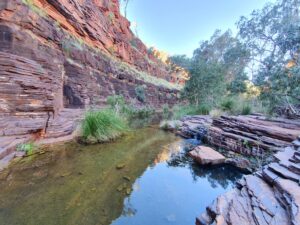
Hopefully some of the images can capture this magical beauty, not that specimen in the middle.

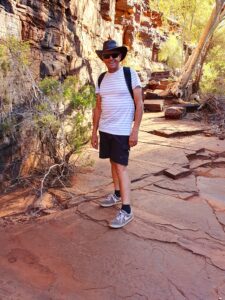
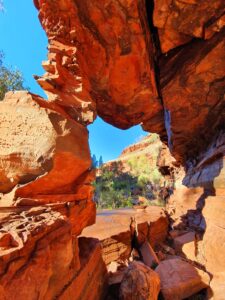
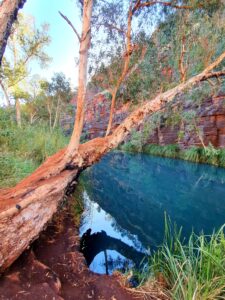
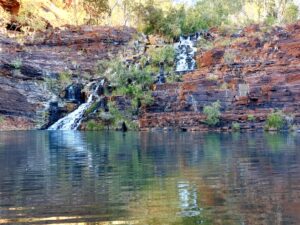
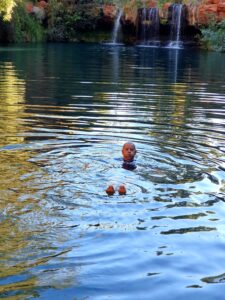
A lovely swim in Fern Pool. Not too cold at all. Was bracing myself for Spanner Water, (As Michael Marmo told me in 1971, spanner water tightens your nuts). These cooling waters are fed by a natural spring and framed on all sides by lush green ferns, with a cascading waterfall completing the serenely beautiful setting.
 Love this gum, tap root runs horizontal for 10mtrs then vertical for 10mtrs
Love this gum, tap root runs horizontal for 10mtrs then vertical for 10mtrs

In the evening we booked in for a night of celestial delights, clear skies ahead, under the guidance and knowledgeable Phill from Remtrek Astronomy. A wonderful 3 hours of insights, mind numbing facts and figures about our universe. It was followed by a 5.30am start to view Jupiter & Saturn as they were both in conjunction in Aquarius. A few photos taken through the lens with my Samsung Phone. Thanks Phill for an informative night with plenty of your cheeky humour. He spends six months in the north and six months based in Perth. We viewed through a 16″ 14″ & 12″ Reflector Telescopes. Book because often sold out, grey nomads book out everything. 40 people x $40, estimate about 15 clear nights a month, do the maths, I should have pursued astronomy in the outback!
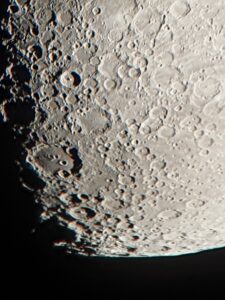
Next day more gorges as the park is very large, some traveling between gorges. Below is Circular Gorge, all these are accessible via walking tracks, some steps and ladders are in place.

Sarah at Joffre Gorge, great swimming and jumping off the ledges all along the gorge. Also Knox Gorge
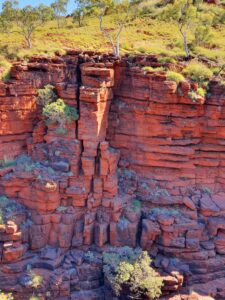
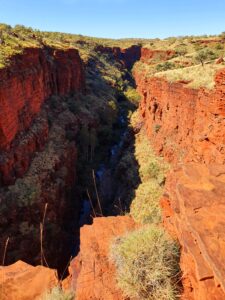
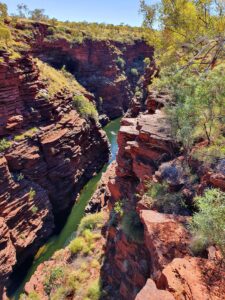

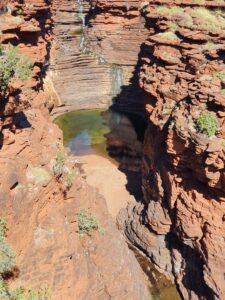
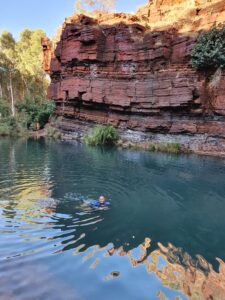
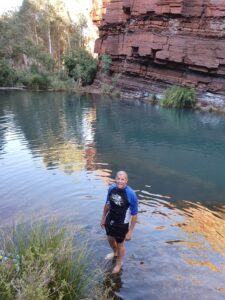 Swimming at Fortesque Falls
Swimming at Fortesque Falls
Joffre Gorge
Fern Pool, Chrissie and myself after a great swim. The water which is Aqua fed is warm over the falls so this pool was not cold, as opposed to those pools further down the gorge, which are in shadow for longer in the winter months, are much cooler. Thanks Chrissie for making our stay possible as it has been booked out for months, so we did not have to travel from outside the park by car for 50 klm, instead of being able to walk to these pools.
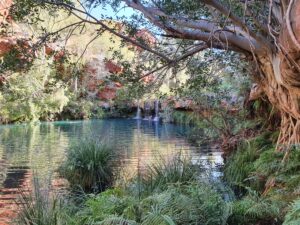
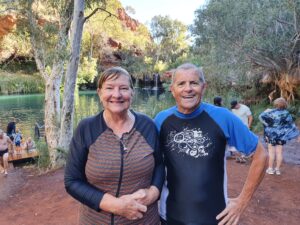
Some resident Black Bats (fruit bats) in the gorge and a local Pheasant Coucal which is part of the cuckoo family, except is incubates and raises its young in it’s own nest not other birds. Surprisingly quite a large bird.
Another sunset from the van on the local escarpment
